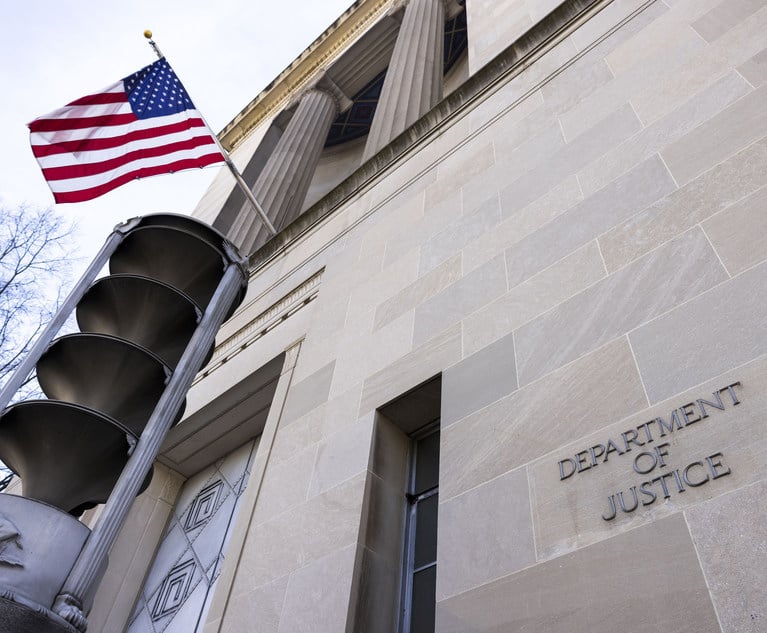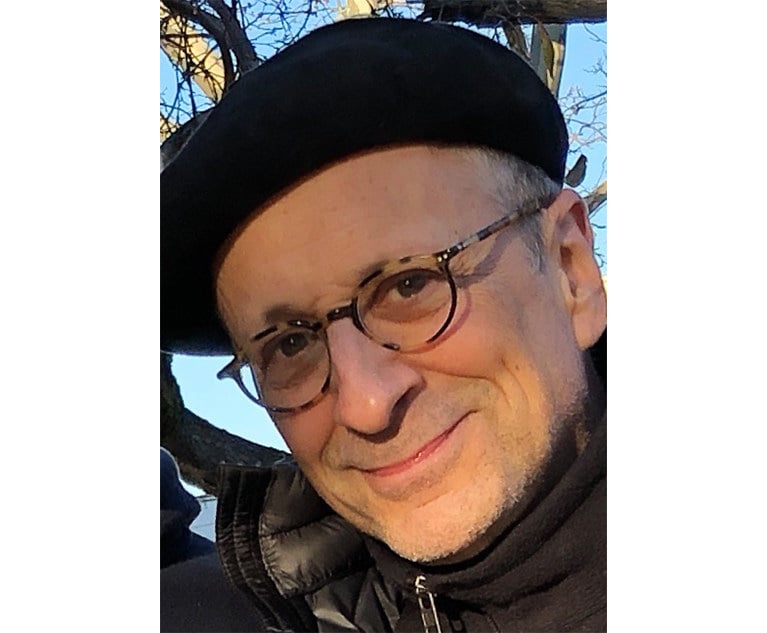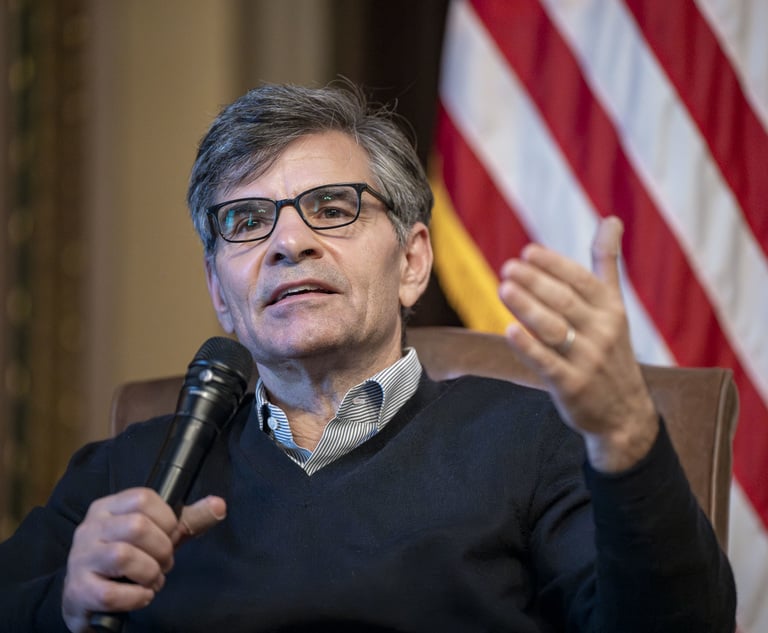Prosecuting PPP Fraud May Be Harder Than It Seems
Once the May 14 deadline for arguably undeserving recipients of PPP loans to return the funds "no questions asked" has passed, the government will no doubt seek to make examples of undeserving PPP loan recipients.
May 12, 2020 at 11:00 AM
9 minute read
 For anyone following developments in the massive small business stimulus program known as the Payroll Protection Program (PPP), May 14 is an important date. That is the deadline imposed by the Treasury Department and Small Business Administration (SBA) for arguably undeserving recipients of PPP loans to return the funds "no questions asked." According to Treasury Secretary Mnuchin, the IRS and SBA will be auditing all loans in excess of $2 million and will be prosecuting instances of fraud. Secretary Mnuchin has also indicated that further guidance will be forthcoming to clarify, and likely limit, the criteria the government will use to determine who is deserving (and not deserving) of the loans.
For anyone following developments in the massive small business stimulus program known as the Payroll Protection Program (PPP), May 14 is an important date. That is the deadline imposed by the Treasury Department and Small Business Administration (SBA) for arguably undeserving recipients of PPP loans to return the funds "no questions asked." According to Treasury Secretary Mnuchin, the IRS and SBA will be auditing all loans in excess of $2 million and will be prosecuting instances of fraud. Secretary Mnuchin has also indicated that further guidance will be forthcoming to clarify, and likely limit, the criteria the government will use to determine who is deserving (and not deserving) of the loans.
Once the May 14 deadline has passed, the government will no doubt seek to make examples of undeserving PPP loan recipients. The government has a number of tools in its arsenal for doing so. Indeed, the first criminal fraud charges stemming from the PPP program have already been brought in the District of Rhode Island in U.S. v. Staveley, 1:20MJ34LDA (D. RI). That appears to have been a clear case of fraud involving phantom employees for several businesses, at least one of which the defendants did not even own. The more difficult, and likely more common, case arises from those borrowers who otherwise would be eligible under the PPP but whose economic need for the loan may be questionable. This article discusses what tools the government has for pursuing seemingly undeserving PPP borrowers, the obstacles to bringing such cases, and the factors that may influence the government's decision in pursuing criminal or civil cases.
|The PPP
The current situation should come as no surprise given the circumstances in which the PPP was passed. The PPP is part of the CARES Act, which was signed into law on March 27, 2020, two weeks to the day after President Trump declared the coronavirus pandemic a national emergency, with states across the country issuing shelter in place orders. With the need to get stimulus funds into the hands of business owners immediately, corners were cut and restrictions were relaxed. Congress dispensed with the public comment period under the Administrative Procedures Act. Vetting requirements associated with the loan applications were relaxed. Most significantly, the PPP declared that the requirement contained in the Small Business Act that borrowers attempt to "obtain credit elsewhere" prior to seeking an SBA loan was inapplicable to PPP loans. See 15 U.S.C. §636(a)(36)(I).
To be eligible for a PPP loan, a borrower must employ no more than 500 employees and must certify in good faith that the loans will be used for payroll and other permissible business purposes. Importantly, borrowers must also certify that "the uncertainty of current economic conditions makes necessary the loan request to support the ongoing operations of the eligible recipient." It is this last certification that has led to the current controversy.
Almost immediately after the PPP funds began to flow, stories surfaced of well-heeled companies, such as Shake Shack, receiving millions of dollars from the PPP program while small companies were left out in the cold. Days later, Treasury Secretary Mnuchin issued a statement promising to bring prosecutions for fraud in the PPP program and vowing to audit all recipients of more than $2 million in PPP funds. Updated guidelines were issued which seem to retroactively restrict the criteria for PPP loan eligibility. And the SBA and Treasury announced what could appropriately be called an amnesty period, stating that any borrower who pays back their PPP loan in full by May 14 will be deemed to have acted in good faith in securing it. Further guidance has been promised. The message to borrower's, especially financially well off borrowers, is to beware.
There are no doubt many other Shake Shack's out there considering whether to return their PPP loans. An important question remains as to what the government can do to those who do not.
|Prosecuting Fraud Under the PPP
The government has a number of potential tools in its arsenal for prosecuting PPP fraud. Perhaps the most obvious charge, because it appears on the face of the application, is for lying on the SBA loan application under 18 U.S.C. §1001. Section 1001 makes it a federal crime to knowingly or willfully make a false representation, or to file a document known to contain a false statement, to an agency of the executive branch, which includes the SBA. Other charges may resemble those brought in the District of Rhode Island in U.S. v. Staveley in this country's first PPP fraud prosecution. These include bank fraud, 18 U.S.C. §1344, which criminalizes a scheme to obtain funds from a financial institution using false or fraudulent pretenses, or a conspiracy to defraud an agency of the executive branch under 18 U.S.C. §371, otherwise known as a Klein conspiracy. Other common charges in situations such as this include mail or wire fraud, 18 U.S.C. §1341 and 1343, which involve a scheme to defraud utilizing the mails or wires.
One thing that these statutes have in common is that they all require the defendant to have acted with criminal knowledge and intent. In the more egregious PPP fraud cases, this may not be difficult to prove. For instance, in Staveley, the defendant allegedly filed a PPP application for a company he did not own. However, in cases where the government's theory is based on the accuracy of the defendant's certification as to the economic necessity of the loan, this may prove challenging.
There are a number of obstacles confronting the government in cases challenging the accuracy of the defendant's economic necessity certification. The first rests with the vagueness of the certification itself. Applicants are required to certify that "the uncertainty of current economic conditions makes necessary the loan request to support the ongoing operations" of the borrower. Neither the CARES Act nor the accompanying guidance issued by the SBA defines what "necessary" means in this circumstance. The SBA and Treasury attempted to fill this void through the issuance of updated "Frequently Asked Questions (FAQs)" issued on April 23, well after many borrowers received, and in some cases spent, the funds. These FAQs state that a borrower's good faith certification as to "economic necessity" must take into account the borrower's "ability to access other sources of liquidity sufficient to support their ongoing operations in a manner that is not significantly detrimental to the business."
There are a number of problems with the government's retroactive "update" to the criteria for securing PPP loans. Whether or not a borrower knowingly obtained a PPP loan through a false certification of good faith depends on the borrower's understanding of the eligibility criteria at the time. Indeed, the updated April 23 FAQs acknowledge as much, stating that "[b]orrowers and lenders may rely on the laws, rules and guidance available at the time of the relevant application."
This speaks to another related obstacle the government will face. The good faith of a borrower's certification not only must be judged on the legal landscape at the time it was made, it also must be judged on the facts on the ground at the time. The coronavirus has hobbled the global economy in unprecedented ways. By many accounts, it has posed a greater threat to the U.S. economy than the 2008 financial crisis, which brought global behemoths such as AIG and the entire U.S. auto industry to their knees. By these measures, it is hard to say that any borrower's certification that the current "economic uncertainty" would necessitate a grant to support the company's ongoing operations.
This is not to say that the government will not be able to bring criminal cases based on false "economic necessity" certifications in the right circumstances. There are certain factors that, if present, are more likely to trigger an investigation. For example, misuse of some or all of the PPP funds for non-authorized purposes, which itself could be prosecuted as fraud, could be used to prove a knowingly-false economic necessity certification. Large distributions to principals of the borrower soon after receipt of the funds would likely constitute another red flag as to fraudulent intent, even where the loan funds themselves were used for authorized purposes. And, of course, as the government has already telegraphed (and notwithstanding the possible retroactivity challenges), large cash reserves and/or the ready availability of other sources of liquidity, such as existing lines credit, will pose a big red flag when it comes time for the government to choose which borrowers to single out as an example.
The government's potential response is not limited to criminal charges. Cases involving arguably false certifications may be brought under the False Claims Act, which has steep punitive damages provisions. In such cases, the government would still have to prove that the defendant acted with the intent to defraud, and therefore would still be subject to many of the obstacles facing a criminal prosecution. However, FCA cases carry the advantage of a lower burden of proof, as the government would need to prove fraud by a preponderance of the evidence rather than by reasonable doubt.
There is also a public shaming aspect to all this, as all SBA loan applications are subject to Freedom of Information Act (FOIA) disclosure. The media will no doubt continue to file FOIA requests and will seek to call out perceived abusers of the program. For borrowers who are sensitive to media scrutiny, such as was the case with Shake Shack's owners, the fear of becoming the poster-child for PPP abuse may prove more of an incentive to return the funds than any perceived legal exposure.
Proving a case of PPP fraud will likely be harder than one might think. Nevertheless, there are multiple reasons for a borrower to think long and hard about whether to keep the funds before May 14.
Christopher M. Ferguson is a litigator at Kostelanetz & Fink who concentrates his practice on white-collar criminal defense as well as civil and criminal tax controversies and other regulatory enforcement matters.
This content has been archived. It is available through our partners, LexisNexis® and Bloomberg Law.
To view this content, please continue to their sites.
Not a Lexis Subscriber?
Subscribe Now
Not a Bloomberg Law Subscriber?
Subscribe Now
NOT FOR REPRINT
© 2024 ALM Global, LLC, All Rights Reserved. Request academic re-use from www.copyright.com. All other uses, submit a request to [email protected]. For more information visit Asset & Logo Licensing.
You Might Like
View All

Government Attorneys Are Flooding the Job Market, But Is There Room in Big Law?
4 minute read

Trump, ABC News Settlement in Defamation Lawsuit Includes $1M in Attorney Fees For President-Elect
Trending Stories
- 1Continuing Consolidation: The Biggest Legal Tech M&As of 2024
- 2FTC Announces HSR Final Rulemaking Impacting Premerger Filings
- 3NJ Cut Down on Open Judgeships in 2024, But Dozens of Vacancies Linger
- 4How to Add PR When You’ve Already Taken an ‘L’
- 5'Be Comfortable Being Uncomfortable': Pearls of Wisdom From 2024 GC Q&As
Who Got The Work
Michael G. Bongiorno, Andrew Scott Dulberg and Elizabeth E. Driscoll from Wilmer Cutler Pickering Hale and Dorr have stepped in to represent Symbotic Inc., an A.I.-enabled technology platform that focuses on increasing supply chain efficiency, and other defendants in a pending shareholder derivative lawsuit. The case, filed Oct. 2 in Massachusetts District Court by the Brown Law Firm on behalf of Stephen Austen, accuses certain officers and directors of misleading investors in regard to Symbotic's potential for margin growth by failing to disclose that the company was not equipped to timely deploy its systems or manage expenses through project delays. The case, assigned to U.S. District Judge Nathaniel M. Gorton, is 1:24-cv-12522, Austen v. Cohen et al.
Who Got The Work
Edmund Polubinski and Marie Killmond of Davis Polk & Wardwell have entered appearances for data platform software development company MongoDB and other defendants in a pending shareholder derivative lawsuit. The action, filed Oct. 7 in New York Southern District Court by the Brown Law Firm, accuses the company's directors and/or officers of falsely expressing confidence in the company’s restructuring of its sales incentive plan and downplaying the severity of decreases in its upfront commitments. The case is 1:24-cv-07594, Roy v. Ittycheria et al.
Who Got The Work
Amy O. Bruchs and Kurt F. Ellison of Michael Best & Friedrich have entered appearances for Epic Systems Corp. in a pending employment discrimination lawsuit. The suit was filed Sept. 7 in Wisconsin Western District Court by Levine Eisberner LLC and Siri & Glimstad on behalf of a project manager who claims that he was wrongfully terminated after applying for a religious exemption to the defendant's COVID-19 vaccine mandate. The case, assigned to U.S. Magistrate Judge Anita Marie Boor, is 3:24-cv-00630, Secker, Nathan v. Epic Systems Corporation.
Who Got The Work
David X. Sullivan, Thomas J. Finn and Gregory A. Hall from McCarter & English have entered appearances for Sunrun Installation Services in a pending civil rights lawsuit. The complaint was filed Sept. 4 in Connecticut District Court by attorney Robert M. Berke on behalf of former employee George Edward Steins, who was arrested and charged with employing an unregistered home improvement salesperson. The complaint alleges that had Sunrun informed the Connecticut Department of Consumer Protection that the plaintiff's employment had ended in 2017 and that he no longer held Sunrun's home improvement contractor license, he would not have been hit with charges, which were dismissed in May 2024. The case, assigned to U.S. District Judge Jeffrey A. Meyer, is 3:24-cv-01423, Steins v. Sunrun, Inc. et al.
Who Got The Work
Greenberg Traurig shareholder Joshua L. Raskin has entered an appearance for boohoo.com UK Ltd. in a pending patent infringement lawsuit. The suit, filed Sept. 3 in Texas Eastern District Court by Rozier Hardt McDonough on behalf of Alto Dynamics, asserts five patents related to an online shopping platform. The case, assigned to U.S. District Judge Rodney Gilstrap, is 2:24-cv-00719, Alto Dynamics, LLC v. boohoo.com UK Limited.
Featured Firms
Law Offices of Gary Martin Hays & Associates, P.C.
(470) 294-1674
Law Offices of Mark E. Salomone
(857) 444-6468
Smith & Hassler
(713) 739-1250






